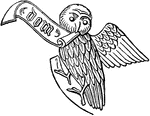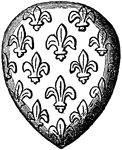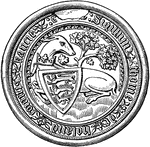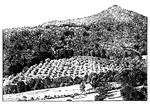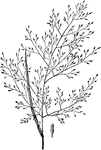
Seal of Sir Thomas Lucy
The official seal of Sir Thomas Lucy, a magistrate who persecuted recusant Catholic families. The seal…

Monogram of John Baret
"In the church of St. Mary, at Bury St. Edmunds, the ceiling of the eastern compartment of the south…
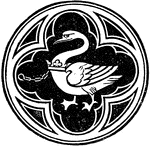
De Bohun Badge
"De Bohun badge. From the central spandrel of the Canopy of the Brass to Alianore de Bohun, Duchess…
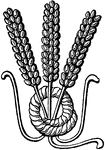
Badge of Abbot John de Wheathamstede
The heraldic badge of Abbot John de Wheathamstede. This badge has a rebus, or a visual pun representing…
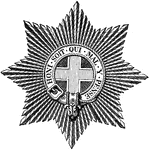
Star of the Order of the Garter
"The Star is the badge, first ordered by Charles I. The rays are of silver or diamonds. The star is…
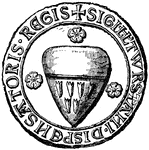
Seal of Thurstan
The heraldic seal of the archbishop of York, who worked under kings William II of England and Henry…
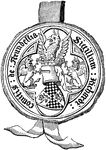
Seal of Richard, Earl of Arundel
"The Seal of Richard, Earl of Arundel, bears his achievement of arms. The supporters, crest, helm, etc.,…
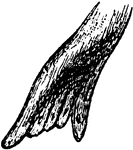
Foot of Seal
"Foot of the seal, which opens and closes in the act of natation, the organ being folded upon itself…

The Seal
"The seal, adapted principally for water. The extremities are larger than in the porpoise and manatee."—Pettigrew,…

The Turtle
"The turtle, adapted for swimming and diving, the extremities being relatively larger than in the seal,…

Torrey Pine Cone
Also known as Pinus torreyana. The Torrey Pine is the rarest pine species in the United States, and…

Pine Cone of Western Hemlock
Also known as Tsuga heterophylla. A species of hemlock native to the west coast of North America.

Pine Cone of Mountain Hemlock
Also known as Tsuga mertensiana. A species of hemlock native to the west coast of North America, between…
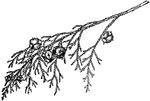
Branch of Nootka Cypress
Also known as Chamaecyparis nootkatensis. Native to the west coast of North America, ranging from Alaska…

Branch of One-Seed Juniper
Also known as Juniperus monosperma. A species of Juniper native to western North America.

Branch of Spanish Bayonet
Also known as Yucca schidigera. A flowering plant that is native to the Mojave Desert in the Western…

Branch of Hooker's Willow
Also known as Salix hookeriana. The branch of a Hooker's Willow tree, native to the west coast of North…

Acrostichum Peltatum Fern
The acrostichum peltatum fern has long fronds that are slender and creeping. This fern needs a liberal…

Training for Apricot Trees at Gable Ends of Cottages
Apricot trees can be trained at gable ends of cottages. The apricot tree prefers walls facing south-west…

Habit of Canna Indica
The common name of canna indica is Indian Reed. The plant grows between three and six feet tall. This…

Cirsium Muticum
Cirsium muticum is a purple flowered thistle. It is found in low grounds from Newfoundland to West Virginia.

Clerodendron Thomsonae
Clerodendron thomsonae is a tall, twining, evergreen shrub. The flowers are white and light crimson.…

Cucumis Anguria
The common names of cucumis anguria are bur cucumber, west Indian gherkin, and gooseberry gourd. The…

Bur Cucumber
Illustrated is the bur cucumber, also known as west Indian gherkin and gooseberry gourd. It is most…

Digitalis Purpurea
Foxglove is the common name of digitalis purpurea. It is native from Great Britain, west and central…
Elaphoglossum Villosum
Elaphoglossum villosum is native to Mexico and the west Indies. The sterile blades are six to nine inches…
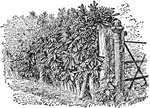
Euphorbia Neriifolia
Illustrated is a euphorbia neriifolia hedge in the west Indies. The plant blooms in June and July.
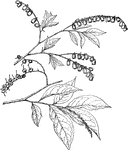
Leucothoe Recurva
Leucothoe recurva is native from Virginia to Alabama. The flowers bloom April to June. The foliage has…
Liatris Spicata Montana
Liatris spicata montana grows ten to twenty inches high. The flowers are blue purple. It is native to…

Greenhouse for Cucumber
Illustrated is a cross section of a greenhouse used for growing cucumbers. It is an east and west house,…

Ligustrum Vulgare
The common name of ligustrum vulgare is common privet or prim. The shrub grows to fifteen feet. The…
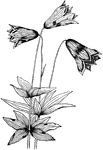
Lilium Grayi
Lilium grayi is native to North Carolina and Virginia. The flowers usually hang more loosely than how…

Puccoon
Puccoon is the common name of lithospermum canescens. It is also known as redroot and Indian paint.…

Lobelia Tenuior
Lobelia tenuior is native to west Australia. The flowers are rather large and bright blue. The flowers…
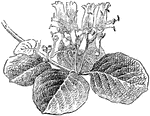
Lonicera Xylosteum
The lonicera xylosteum shrub grows ten feet tall. It is native to Europe and west and north Asia. The…

Lonicera Caprifolium
Lonicera caprifolium is native from central Europe to west Asia. The flowers are yellowish white, often…
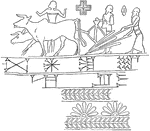
Babylonian Seal Impression
Pictured are men plowing a sowing. This illustration is from a Babylonian seal impression from the 14th…

Nemopanthus Mucronata
The common name of nemopanthus is mountain holly. The mucronata variety is native from Canada to Wisconsin,…

Ginger
Ginger is the dried rhizome of the tropical plant Zingiber officinale. It is used in cookery, because…
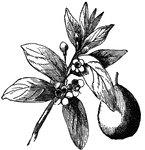
Guava
Guava (Psidium guayava) is a low-growing West Indian tree belonging to the family Myrtaceæ. It bears…










